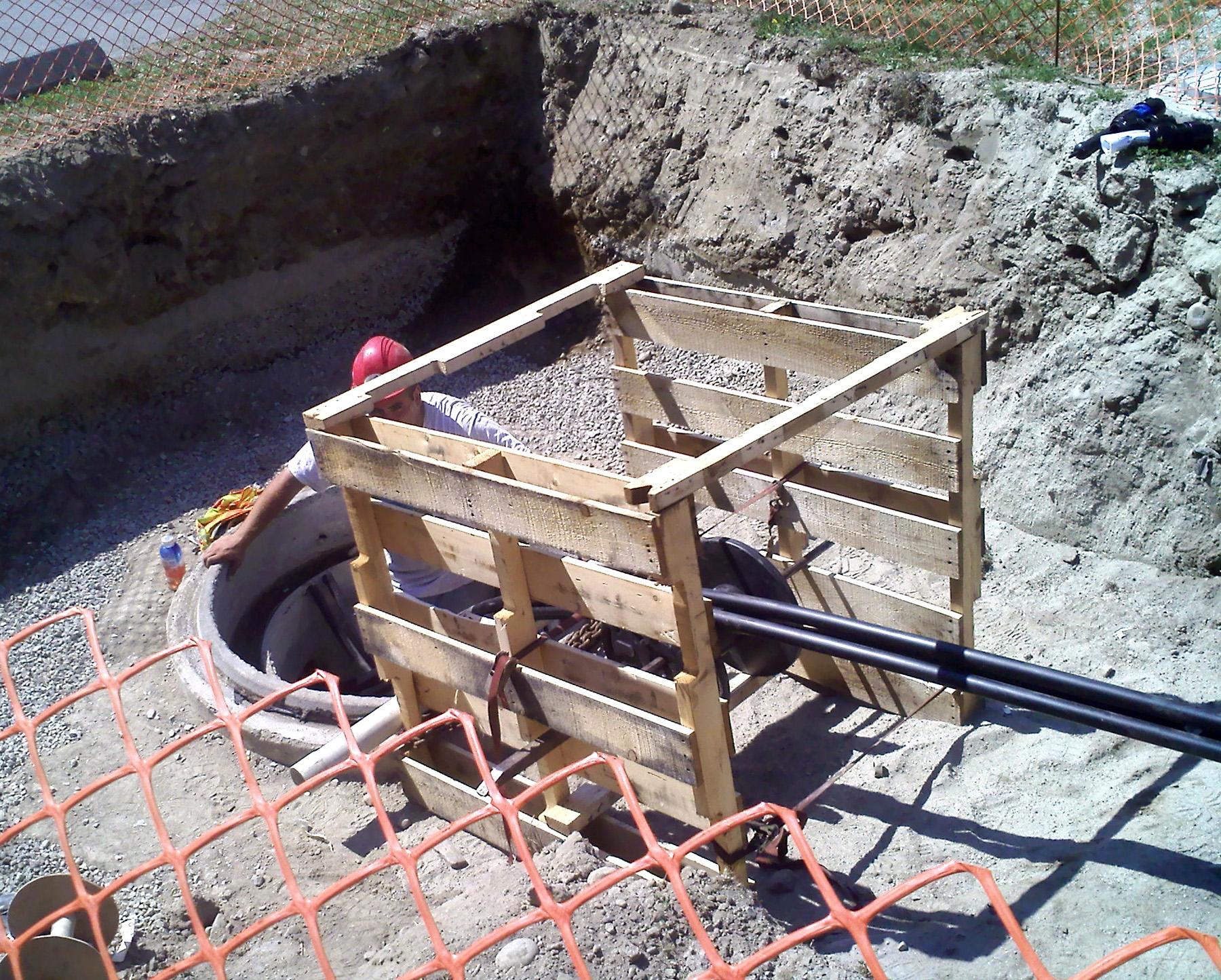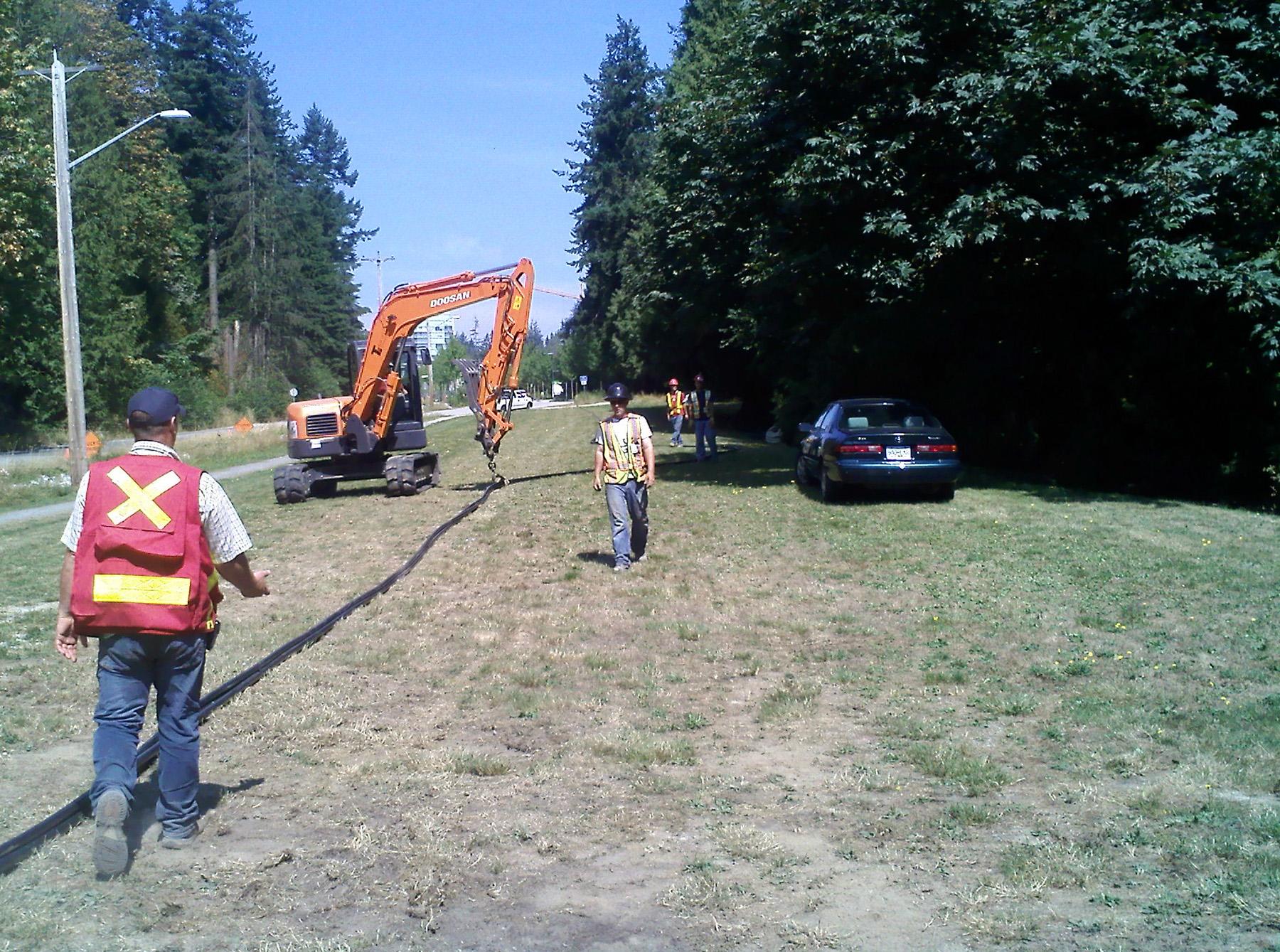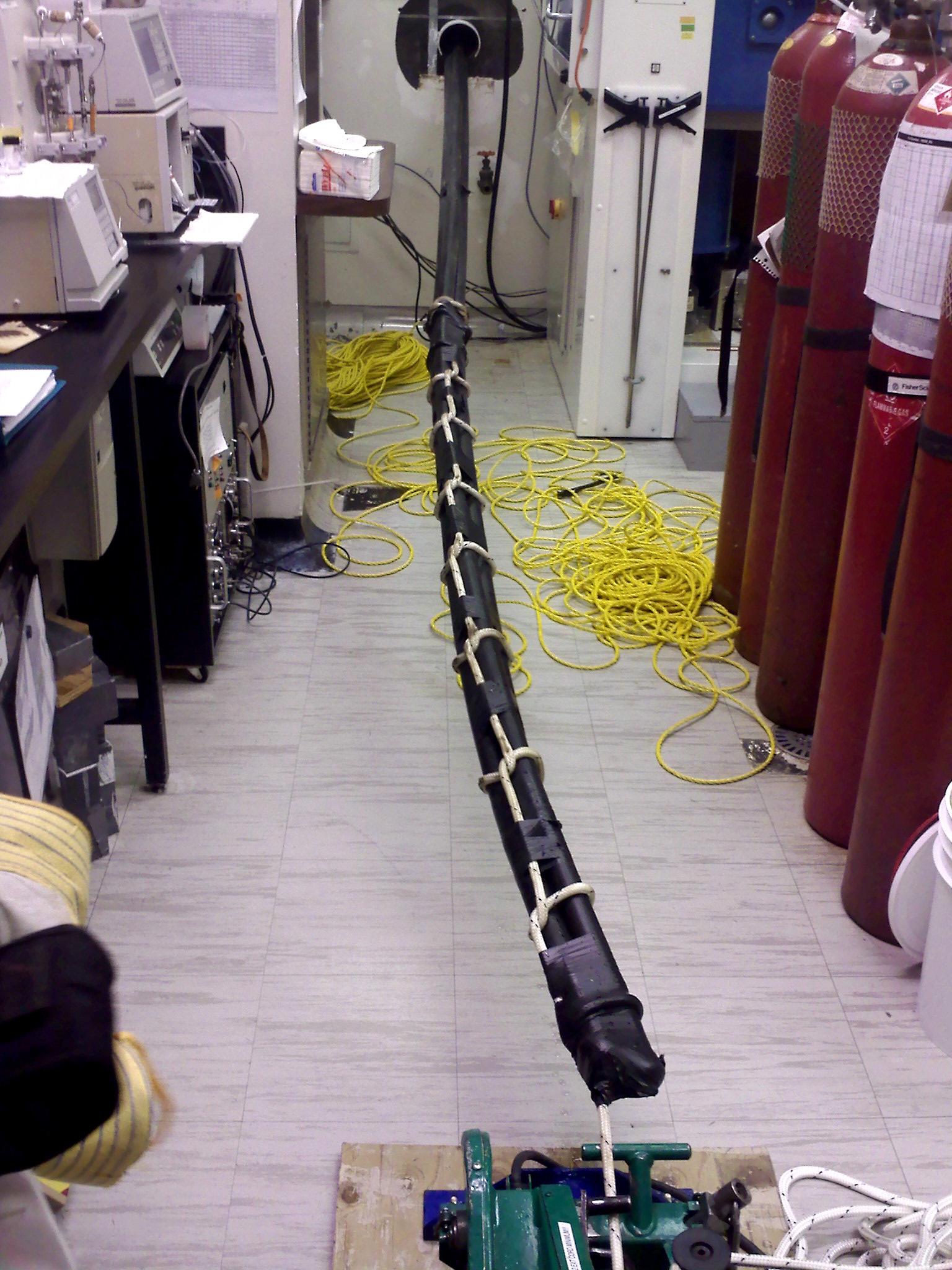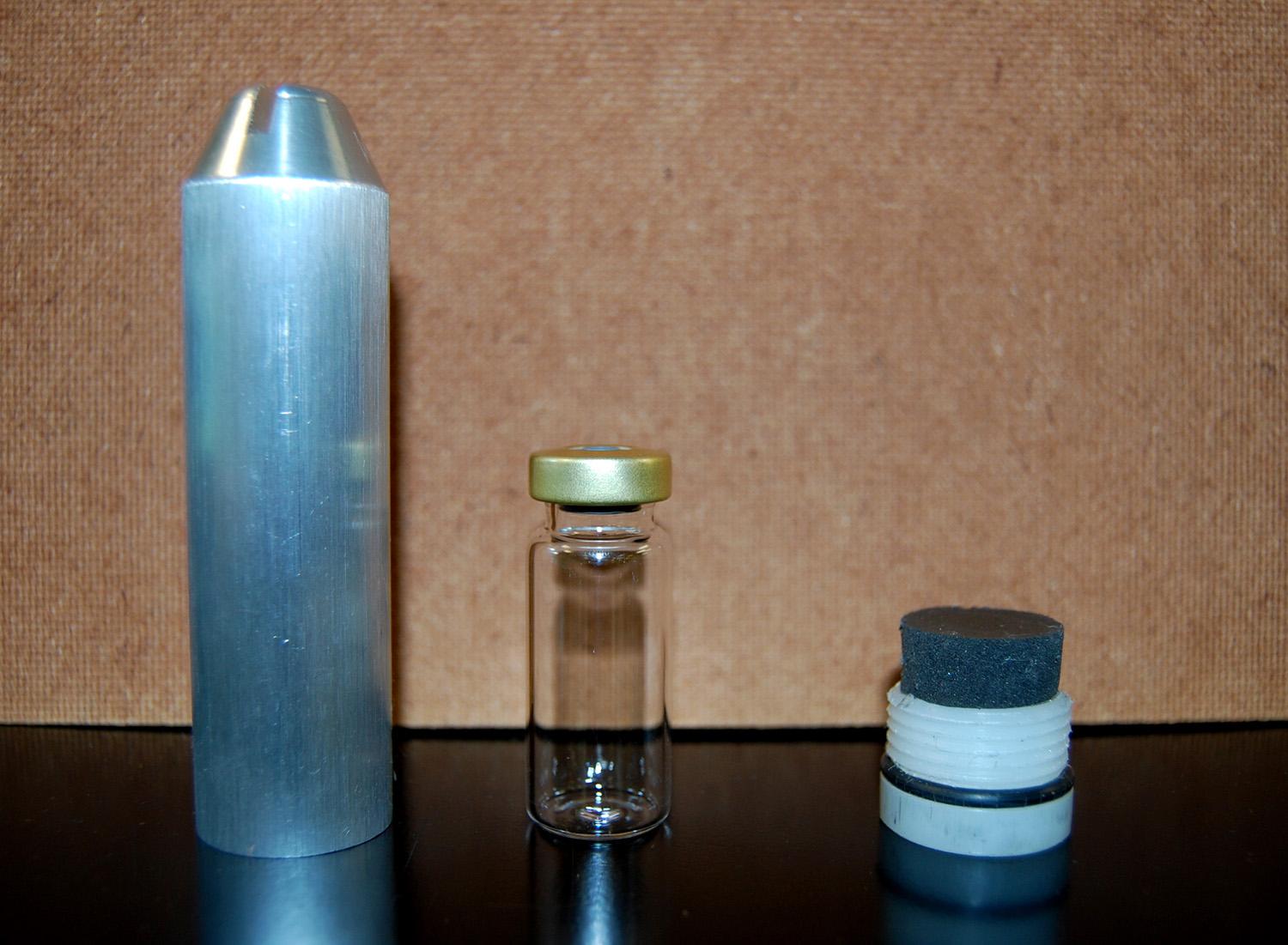 | |||||
Manhole with ramp set-up | |||||
 | |||||
Excavator feeding in the new tubing | |||||
 | |||||
Tugger pulling in the tubing |
|
| |||
 | |||||
A "rabbit": aluminum capsule and glass vial |
On your way to work last week, you might have noticed a large pile of moved earth, a gaping manhole, and a set of skilled engineers working out front across from the TRIUMF sign. This speedy construction project was to replace a section of the tubing for the so-called “rabbit line”1. The original tubing was installed in 1983, made with the newest and most durable type of plastic out on the market at the time except nobody really knew how long its lifetime was! The sections of the tubing from TRIUMF to the 16th Ave intersection had been previously replaced during the development of the Wesbrook Mall residences, but the last section leading to TRIUMF’s nuclear medicine laboratories recently showed signs of cracking. On inspection only the sections of tubing exposed in the laboratory appear to have deteriorated. The new tubing, 300m in length, was a bundle of 3 lines: 2 used as transfer tubes and 1 for a signal cable, all made of a high density polyethylene, resistant to UV, and expected to last much longer than the older white plastic.
The rabbit line is 1.5m underground, while the manhole is only a few feet wide. It would be quite a challenge to insert the 300m-long bundle without bending it in a right angle. Back in 1983 when the original tubing was put in, they were stretched so much that it took 18 months for them to shrink. A simple solution has been found: digging around the manhole to fit in a ramp set-up, which facilitated the insertion of the bundle with minimal bending and stretching of the tubes. The insertion process required an excavator (with its head replaced by a hook) feeding in the bundle, while a mechanized “tugger” down at the lab pulled it in through the conduit with a rope. Unlike conventional gas and water pipes which are typically welded, this new section of the rabbit line is connected to the rest of the line with mechanical couplings, creating a consistent inner diameter of the line, ensuring a smooth ride for the rabbits2.
Since the Pacific Parkinson’s Research Centre at UBC is currently on summer holidays, there has been no demands for radiopharmaceuticals to be delivered through the rabbit line, making this a perfect time for the replacement to be done. Now that the tubing is brand new, the rabbits will soon be on (or under!) the road again!
1The rabbit line is an underground pipeline that runs 2.5km to the UBC Hospital, using air pressure of 90~100 psi (pounds per square inch) to propel the rabbit. The same air pressure is used to stop the rabbit by venting the air out 30 feet from the end. The rabbit then compresses the last air in front of it, slowing down until it finally stops at the UBC receiving station. There are 11 manholes equally spread out above the rabbit line, each covered with multiple concrete lids as a radiation shield, which is equivalent to the shielding provided by the ground throughout the entire length of the line.
2A “rabbit” consists of a glass vial with a dosage of the requested radiopharmaceutical (in liquid form), protected by an aluminum capsule, custom-made at TRIUMF. The rabbits travel the 2.5km in about 2.5 minutes with a peak speed of 100km/hr and an average of 60km/hr. They are sent about 3 or 4 times a day to the Pacific Parkinson’s Research Centre for studies. The TR13 cyclotron produces Nitrogen13, Carbon11, and Fluorine18, which are then used to produce approximately 20 different types of tracers.
—Ting Wang, Communications Assistant
